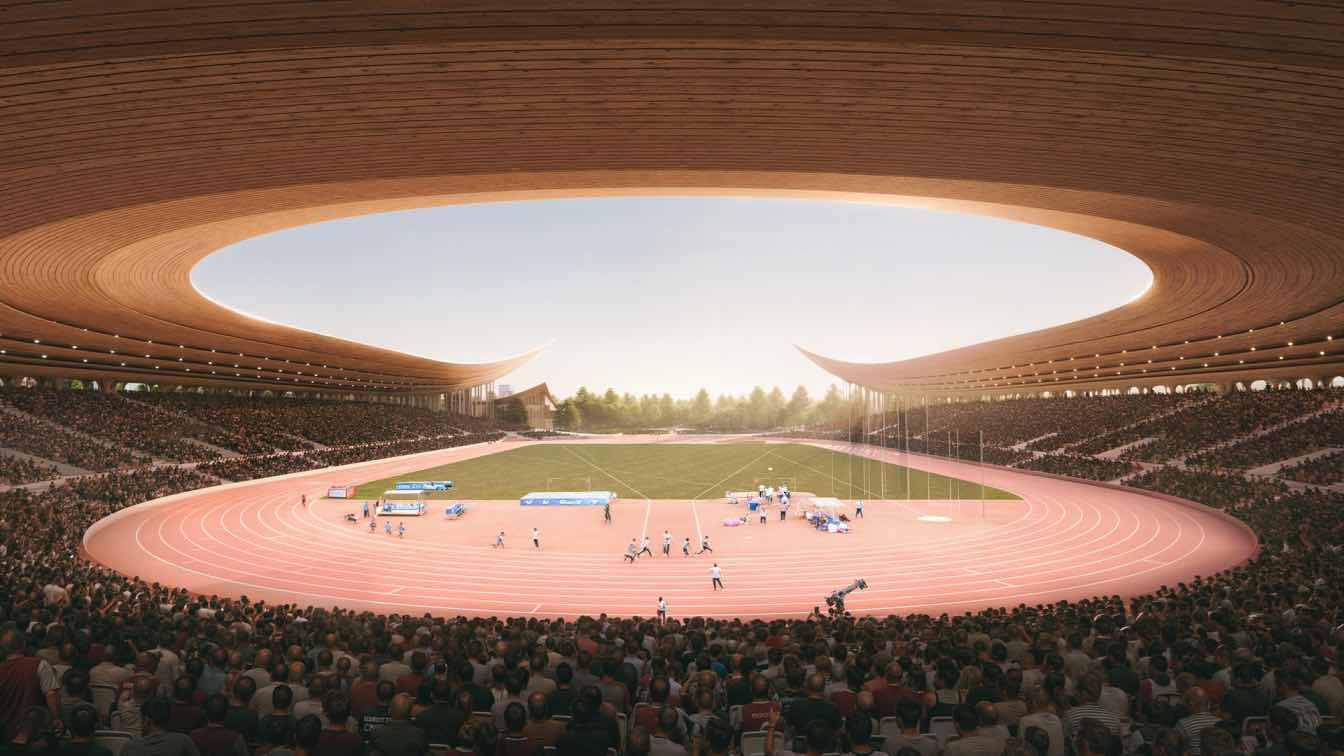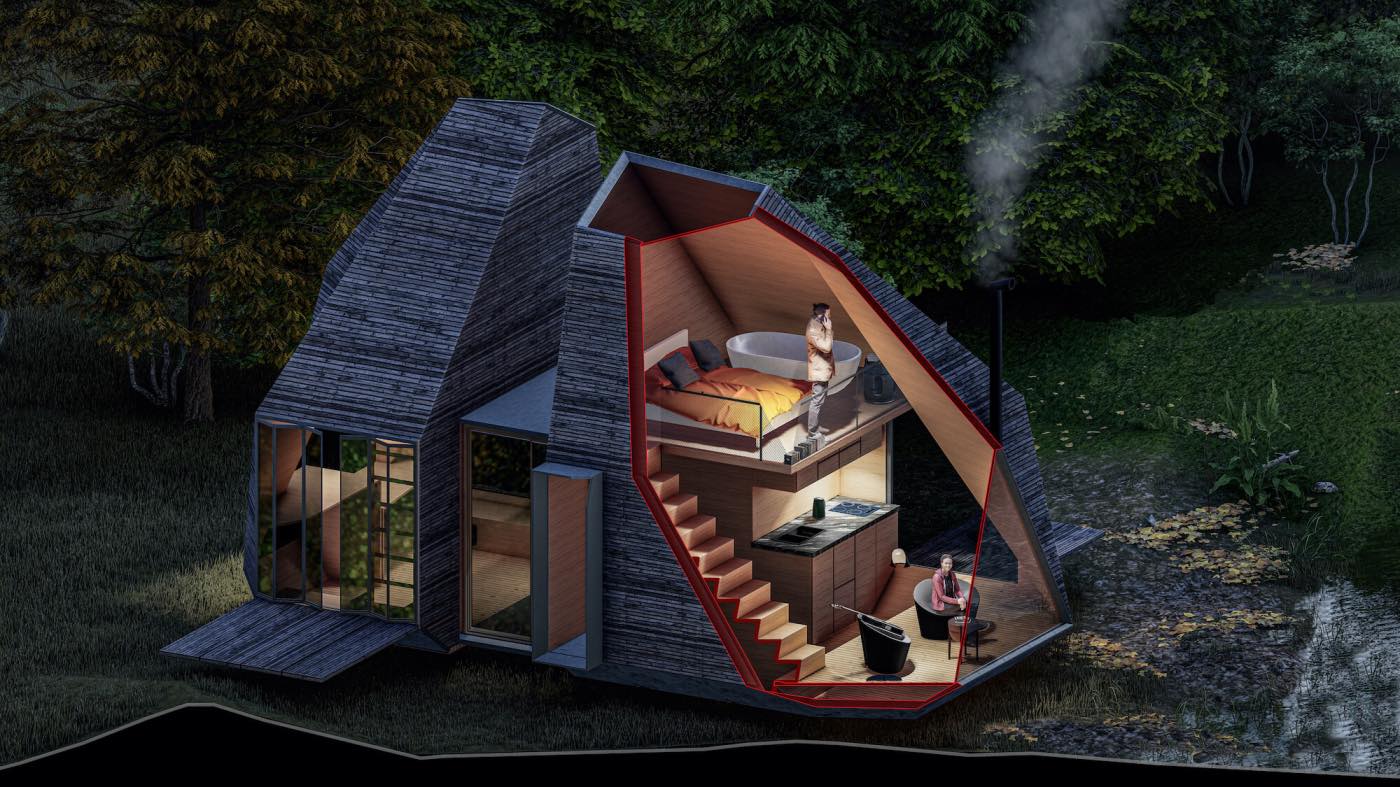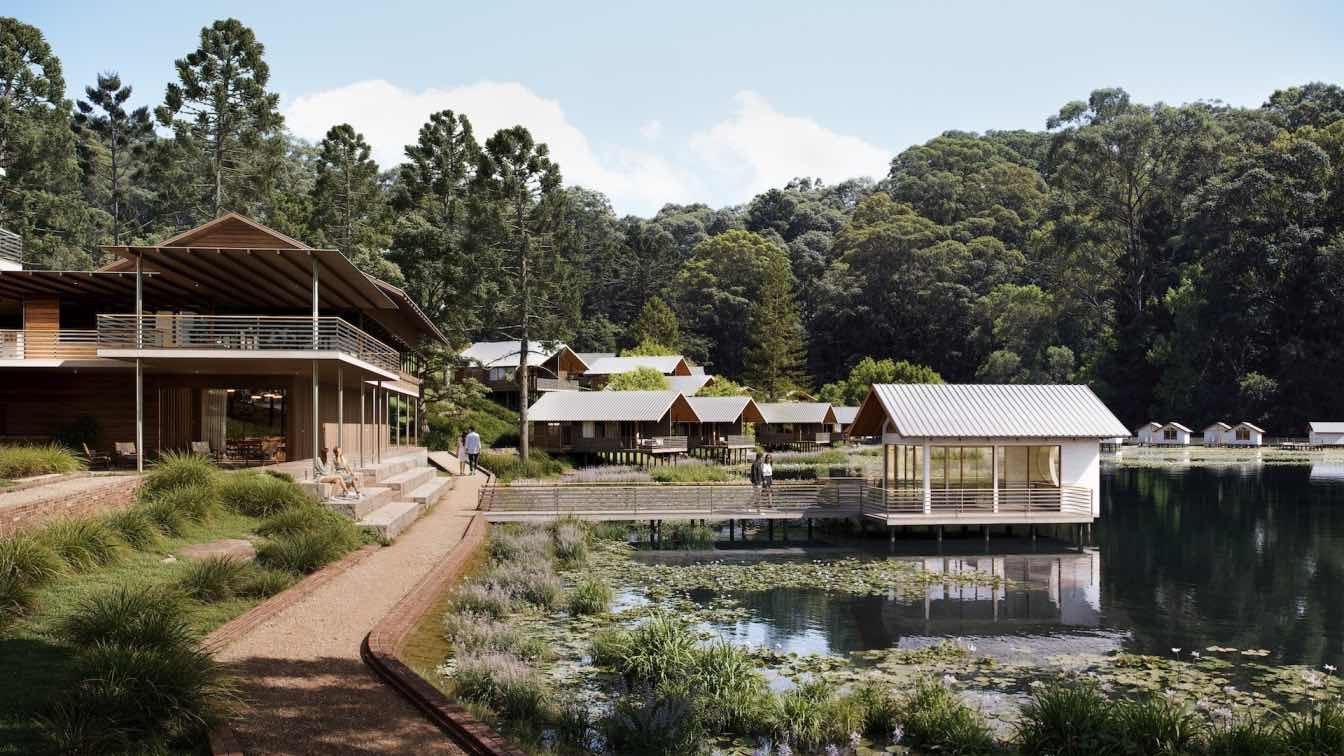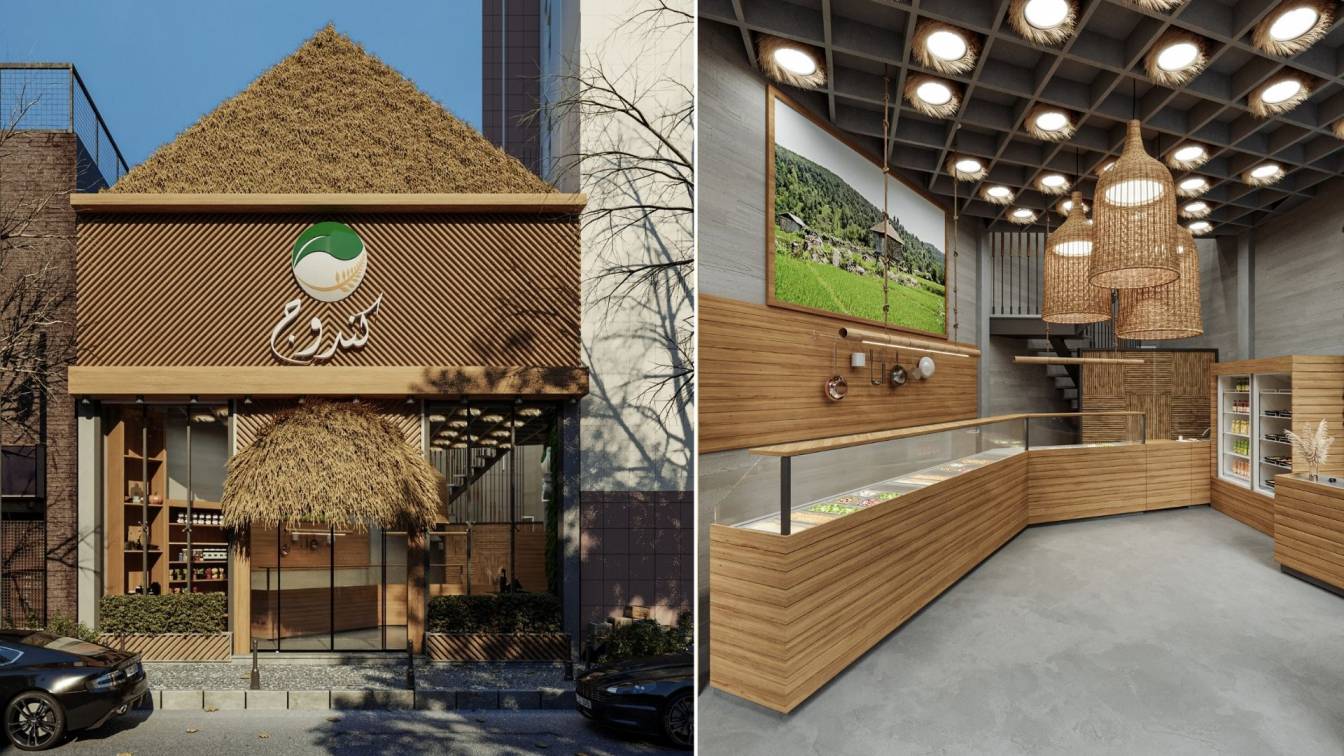Entropic in collaboration with studio4SPACE & ARUP Polska has unveiled a proposal for a Leisure and Sport Infrastructure redesign in the city of Warsaw.
The reconstruction project of the existing athletics stadium intricately combines functionality with aesthetic innovation, aiming to transform the space into a more integrated part of the urban and natural landscape. This ambitious redesign not only revitalizes the stadium but also enhances accessibility and community engagement. Visitors can now access the stadium through traditional entrances and a new elevated public path. This path, which runs along the stadium's crown, offers a scenic route that directly connects to the city, weaving through the park surroundings and providing a seamless transition from urban to recreational spaces.
Architecturally, the stadium’s structure draws inspiration from its park location, featuring a forest of columns that emulate tree trunks, creating a visual continuity with the surrounding greenery. This design not only pays homage to the natural setting but also helps blur the boundaries between the built environment and the park. Adding to the immersive experience, the stadium’s roof is designed to open towards the park, inviting natural light and views of the verdant landscape into the spectator areas.
The project aims to create a diverse sports hub catering to both amateur and professional athletes, emphasizing sustainable development and ecological balance. The complex includes the redesigned stadium and a new multifunctional sports hall. The buildings have been designed with a strong focus on sustainability, prioritizing user comfort, energy efficiency, and environmental protection. Key sustainable features include the use of renewable energy sources, such as perovskite solar panels on the stadium roof and quantum dot coatings on large windows. Ground-source heat pumps, vertical-axis wind turbines, and kinetic energy-harvesting pavements will further reduce the project's carbon footprint. Recycled materials will be used for construction, and the design incorporates low-emission concrete and FSC/PEFC-certified wood. Water management strategies include a "blue roof" for rainwater collection and the use of native plants require Nng minimal irrigation. The project also emphasizes reducing the operational carbon footprint through LED lighting, daylight maximization, and smart energy management systems.

The project proposes covering the stadium stands with a roof supported by four rows of irregularly scattered columns. This irregularity is inspired by nature, reflecting the trees and shrubs that grow around the area. However, each of these columns serves a specific function and differs in dimensions. The inner two rows of columns, with the largest diameter, bear the main load of the roof's truss structure. The middle ones play a technical role, draining rainwater (captured in underground tanks, with excess water directed to rain gardens) and housing technical installations, including cabling for the photovoltaic panels on the roof. The outermost strip of columns acts as tension members, stabilizing the roof structure.
The project aims to maximize financial returns on stadium and sports hall investments by transforming underutilized areas into a vibrant, multi-functional space that generates revenue beyond just sports events, turning the stadium into a year-round entertainment and commercial hub. At the stadium, you can rent office space, grab a coffee, buy a basketball or climbing shoes, and visit museums or memorial sites throughout the week. The stadium can become a new community hub, where people gather, meet, and enjoy themselves.
TECHNICAL FEATURES OF THE STADIUM RESUMED:
Roof Structure:
The roof is supported by four rows of irregularly scattered columns inspired by natural elements like trees. The two inner rows of columns with the largest diameters bear the main pressure of the truss structure. The middle rows of columns serve technical functions, including rainwater drainage and housing installations such as cabling for the photovoltaic system on the roof. The outermost columns act as tension members, stabilizing the roof structure.
Rainwater Management:
Rainwater is captured and stored in underground tanks, with excess directed to water gardens.
Preserved Elevation:
The original stadium elevation is preserved, serving as a shell for new functions under the stands.

Zoning and Accessibility:
The eastern part is a closed zone for administration, media, and VIPs, connected to a dedicated stand via an underground garage. Ground floor includes athlete changing rooms with access to a spacious underground warm-up/training zone linking the stadium and multifunctional hall. Two ramps and staircases provide access to the main pitch, leading from the starting line (south) and the finish line area (north).
Fan and Public Access:
Fans can access the stadium via the underground car park, old ground-level entrances, and a path along the stadium crown that connects to Zieleniec Wielkopolski Park.
Multifunctional Space:
The west side features an open, multifunctional space with shops, bars, restaurants, and a place of remembrance. A 7-meter-high lobby with the potential for mezzanine construction, and a top-floor co-working zone for start-ups, including closed spaces for e-sports.
Surrounding Area Development:
The western area serves as a gaming and recreation zone with open pitches and terrain stairs forming stands. Eastern formal side features parking for administration, athletes, and media, and an entrance to a large underground car park with over 400 spaces.













ABOUT ENTROPIC
Entropic is an award winning, international architectural and urban design studio, focused on innovation and sustainable development. Our design philosophy uniquely combines Scandinavian sensibilities with Mediterranean energy.
Entropic is committed towards re-imaging the built environment with a focus towards livability, contemporary challenges, and architectural innovation. Our multi-disciplinary international team consists of Architects, Designers, Urbanists and Engineers.





